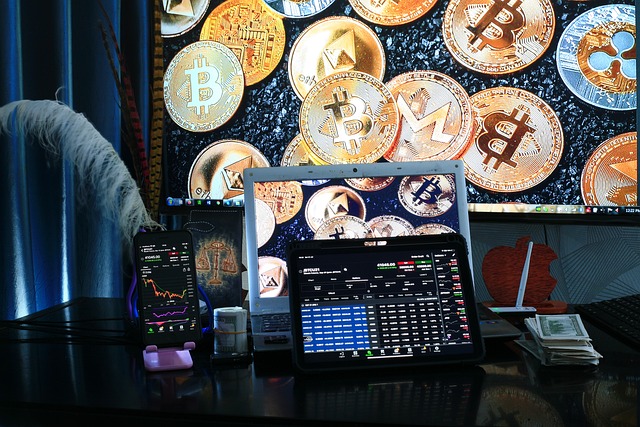In a world dominated by traditional currencies like dollars, euros, and yen, there’s a new player in town: cryptocurrency. You’ve probably heard the term thrown around, but what exactly is cryptocurrency, and why is it gaining so much attention? In this comprehensive guide, we’ll break down everything you need to know about cryptocurrency in simple terms.
What is Cryptocurrency?
Cryptocurrency is a digital or virtual form of currency that uses cryptography for security. Unlike traditional currencies issued by governments (fiat currencies), cryptocurrencies operate on decentralized networks based on blockchain technology. This means they are not controlled by any single entity like a government or financial institution.
How Does Cryptocurrency Work?

At the heart of cryptocurrency is blockchain technology. A blockchain is a distributed ledger that records all transactions across a network of computers. Each transaction is grouped into a block, which is then added to a chain of previous blocks, hence the name blockchain.
When you make a cryptocurrency transaction, it is broadcast to the network of computers, known as nodes. These nodes validate the transaction using complex algorithms, and once verified, it is added to the blockchain. This decentralized and transparent process ensures the integrity and security of cryptocurrency transactions.
Key Characteristics of Cryptocurrency
- Decentralization: Cryptocurrencies operate on decentralized networks, meaning no single authority has control over them. This eliminates the need for intermediaries like banks, resulting in lower transaction fees and faster processing times.
- Security: Cryptocurrencies use cryptographic techniques to secure transactions and control the creation of new units. This makes them resistant to fraud and counterfeiting.
- Anonymity: While transactions are recorded on the blockchain, the identities of the parties involved are encrypted. This provides a certain level of anonymity, although the degree varies depending on the cryptocurrency.
- Limited Supply: Many cryptocurrencies, like Bitcoin, have a capped supply, meaning there is a maximum number of coins that can ever be created. This scarcity can increase their value over time, similar to precious metals like gold.
Unlock Your Trade Potential: A Complete Manual for Effective Paper Trading!
Popular Cryptocurrencies
- Bitcoin (BTC): Launched in 2009 by an unknown person or group of people using the pseudonym Satoshi Nakamoto, Bitcoin is the first and most well-known cryptocurrency. It paved the way for the entire cryptocurrency ecosystem and remains the most valuable by market capitalization.
- Ethereum (ETH): Introduced in 2015 by Vitalik Buterin, Ethereum is more than just a digital currency. It’s a decentralized platform that enables developers to build and deploy smart contracts and decentralized applications (DApps).
- Ripple (XRP): Ripple aims to facilitate fast, low-cost international money transfers. Unlike Bitcoin and Ethereum, which are mined, Ripple’s tokens were all pre-mined, and the company behind it, Ripple Labs, controls the release of new tokens.
- Litecoin (LTC): Created by Charlie Lee in 2011, Litecoin is often referred to as the “silver to Bitcoin’s gold.” It is designed to be faster and more scalable than Bitcoin, with a maximum supply of 84 million coins.
How to Get Cryptocurrency
There are several ways to acquire cryptocurrency:
- Cryptocurrency Exchanges: These online platforms allow you to buy, sell, and trade cryptocurrencies using fiat currency or other cryptocurrencies. Popular exchanges include Coinbase, Binance, and Kraken.
- Mining: Some cryptocurrencies, like Bitcoin, can be obtained through a process called mining. Miners use powerful computers to solve complex mathematical puzzles, and in return, they are rewarded with newly minted coins.
- Peer-to-Peer Transactions: You can also acquire cryptocurrency by directly exchanging it with others through peer-to-peer platforms or in person.
Challenges and Risks

While cryptocurrency offers many benefits, it also comes with its fair share of challenges and risks:
- Volatility: Cryptocurrency prices can be highly volatile, with values fluctuating dramatically over short periods. This makes them attractive for traders but risky for investors.
- Regulatory Uncertainty: Governments around the world are still grappling with how to regulate cryptocurrencies. Uncertainty about future regulations can impact their adoption and legitimacy.
- Security Concerns: While blockchain technology itself is secure, cryptocurrency exchanges and wallets can be vulnerable to hacking and theft. It’s essential to take precautions to safeguard your digital assets.
The Future of Cryptocurrency
Despite the challenges, many experts believe that crypto assets have the potential to revolutionize the financial industry and beyond. As blockchain technology continues to evolve and mature, we may see even more innovative use cases emerge.
In conclusion, cryptocurrency is a digital form of money that operates on decentralized networks using blockchain technology. It offers benefits such as decentralization, security, and anonymity but also comes with challenges like volatility and regulatory uncertainty. Whether you’re a seasoned investor or just curious about this new frontier, understanding the basics of crypto assets is the first step towards navigating this exciting and ever-changing landscape.

















